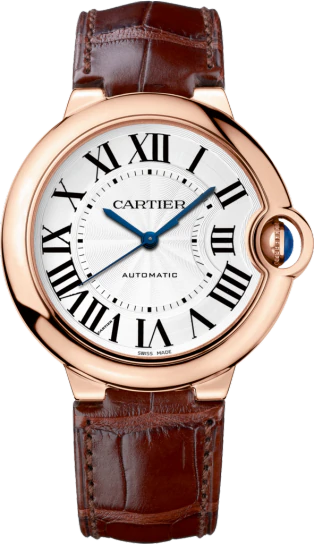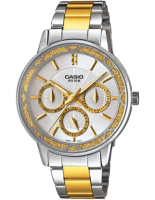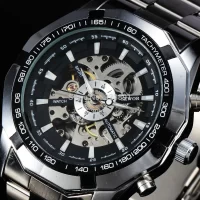










The Cartier Manufacture is one of the largest fully integrated production facilities in Switzerland
Cartier was founded in 1847 in Paris by the jeweller Louis-François Cartier, who in 1899 handed over to his three sons .
Cartier Louis-Francois Cartier took over the jewelry workshop of his master, Adolphe Picard, at 29, Rue Montorgueil in 1847. Due to his success he decided to move to a new establishment in the Rue Neuve-des-Petits-Champs, and then to the Boulevard des Italiens.
Paris was in the whirlwind of festivities and luxury which characterized the Second Empire. Princess Mathilde, a first cousin of Napoléon III, gave Louis-François Cartier a prestigious clientele, attracted to Paris by the 1867 Universal Exhibition.
The international elite was seduced by the brilliance of the creations of “a jeweler unlike any other”. Alfred Cartier, Louis-François Cartier’s son, helped his father. He was a clever businessman, an expert in precious stones, who quickly acquired fame throughout Europe.
A long friendship with the couturier C. F. Worth was beneficial for Alfred Cartier’s fame, and his eldest son Louis-Joseph married the Worth granddaughter and established a shop at 13, Rue de la Paix in 1898.
Russian nobility and eastern aristocracy became passionate devotees of the Cartier art and style. Every royal family visited the salons; the Prince of Wales, later Edward VII, proclaimed Cartier “Jeweller of Kings and King of Jewelers” and encouraged the establishment of Cartier London in 1902 under the responsibility of Jacques-Theodule Cartier, the younger son.
Louis Cartier created jewels and “objets d’art”, but he also retook watchmaking traditions which had been lost for over a century with pieces like the legendary mystery clocks, high fashion wristwatches, carriage clocks and jewelry watches with oriental Art Deco designs, including the daringly colorful “Tutti Frutti” jewels.
The accessory timepiece became one of the predominant forms of the activity and prestige of Cartier.
Quite early, Cartier took an interest in watchmaking. It was not long before a large number of fob and chatelaine watches appeared. In 1888 Cartier account books mentioned the first ladies’ wristwatches. In 1904, he created the Santos watch for his friend and client the Brazilian aviator, Alberto Santos-Dumont, although it did not go on sale until 1911. This success was to be followed by other models such as the Tonneau watch (1906) and the Tortue watch (1912).
By that date, Louis Cartier had begun the exclusive production of the first wristwatches at his establishment in Paris helped by Edmond Jaeger.
The third Maison Cartier, for which Pierre-Camille, the second son, was responsible, was founded in New York in 1909, moving to its current location of 653 Fifth Avenue in 1917.
After the First World War, Louis, with innate intuition, predicted the manners of a reborn woman during the period known “La Belle époque”. Soon, the international elite returned to the salons in the Rue de la Paix, New Bond Street, and the Fifth Avenue. Cartier Tank watch was introduced in 1919 and became Cartier’s most famous model. Louis
Cartier was inspired by the tough new war machine the Americans introduced to the fighting in Europe, the tank, to design a rugged yet beautiful watch that became a classic.
The early Cartier men’s wristwatches were all handmade in France, with movements by Jaeger, Cartier Paris and the European Watch and Clock Co, who manufactured complicated movements such as chronographs, minute repeaters, and digital wristwatches.
Louis Cartier achieved innovation, supported by the exceptional people who worked with him, who were joined by Jeanne Toussaint, who conducted the “S” department, a prefiguration of the “Les Must de Cartier”, which brought out original creations in enamel, silver and leather.
Cartier had a substantial influence in persuading the Parisian aristocracy to accept the idea of wristwatches for men, though the classic pocket watch was considered the only timepiece a gentleman should carry.
Louis Cartier undeniably laid the foundations of a new concept in luxury goods.
In 1925, the “Exposition des Arts Décoratifs” assured Cartier’s superiority in all the disciplines which made his fame.
The Wall Street crash in 1929 marked the beginning of austerity in design.
Louis Cartier entrusted Jeanne Toussaint with the responsibility for Haute Joaillerie (high jewelry design) from 1933 on. She controlled a universe of lapidaries, stone setters and designers. Under the influence of the Orient, she brought gold back to the reigning fashion. That same year Cartier obtained the patent for the “invisible setting” (called “serti mysterieux”).
When the Second World War began, Louis Cartier left France and Jeanne Toussaint took over in the interim at 13, Rue de la Paix. Two creations demonstrated just how she proved to be the perfect alter ego of Louis Cartier: the “oiseau en cage”, the symbol of the occupation, then the “oiseau liberé”.
Louis Cartier and Jacques died within six months of each other in 1942. Pierre died in Switzerland in 1964. With the death of the three brothers, the Cartier Empire split up.
In 1968, Robert Hocq, the first maker in the world of gas cigarette lighters, created a luxury lighter which he licensed under the brand name of Cartier. It quickly revolutionized the market.
Four years later, a group of investors brought together by Joseph Kanoui took control of Cartier Paris and placed Robert Hocq as President. Hocq was fascinated by the past of this fabulous Maison, and became immersed in it, but at the same time brought a breath of youth and modernism in the organization and its new creations.
In 1973, he finished “Les Must de Cartier” in cooperation with Alain Dominique Perrin, who was then in charge of the Cartier lighter, and to whom he gave the responsibility of the development and management. That same year, the first “Must de Cartier” boutique was opened in Biarritz, followed by one in Singapore.
The Cartier watch created to honour the aviator Santos Dumont was redesigned in 1978 and t was redesigned in 1978 and called Santos de Cartier. 1979 saw the historic culmination of the reunification of Cartier’s interests throughout the world, with the creation of Cartier Monde, reuniting and controlling Cartier Paris, Cartier London and Cartier New York. After the accidental death of Robert Hocq in December of the same year, Joseph Kanoui was appointed Chairman of Cartier Monde.
During the 1980’s Cartier added approximately 100 different models to its line and always remained one step ahead of the competition. Cartier’s first perfume was created in 1981: Must de Cartier. In 1982, Micheline Kanoui assumed responsibility for jewellery design and launched her first collect ion “Nouvelle Joaillerie”.
In 1984, Alain Dominique Perrin founded the “Fondation Cartier pour l’art Contemporain” (the Cartier Foundation of Contemporary Art) by forming an association between th e firm and living artists.
The next year as a tribute to power, Cartier create d the Cart ier Pasha watch.
The Cartier group purchased the greater part of Piaget and Baume & Mercier holdings in 1988 and, in 1989, saw the triumph of the first great “l’Art de Cartier” exhib ition at the Petit Palais.
In 1991, aiming to increase the influence of High Watchmaking, Alain Dominque Perrin established an international foundation, “Comite International de la Haute Horlogerie”. In April that same year the 1st Salon International de la Haute Horlogerie was held. This place in Geneva became the annual meeting point for professionals in High Watchmaking, which now cou nts 1 6 watchmaking brands.
In 1992, Cartier held its second great “l’Art de Cartier” exhibition at the Hermitage museum in Saint Petersburg. The same year the publication of the book entitled ‘l´Objet Cartier” bore witness to the wealth and diversity of the objects created by Car tier for almost 150 years.
October 1993 saw the creation of the “Vendôme Luxury Group” bringing together the brands of Cartier, Alfred Dunhill, Montblanc, Piaget, Baume & Mercier, Karl Lagerfeld, Chloé, Sulka, Hackett, Seeger, and J ames Purdey and Sons.
In 1994, the Cartier Foundation moved to the Rive Gauche and opened their new headquarters, an architectural work of art designed for them by t he ar chitect, Jean Nouvel.
In 1995 the Cartier Pasha C watch was created to celebrate the 10th anniversar y of the Pasha de Cartier.
1996 was a very important year for Cartier. The Cartier Tank Francaise watch was created.
Cartier began the new century: the Cartier Roadster watch was born in 2002 and, in 2004, Cartier creates the Cartier Santos 100 watch to celebrate the 100th anniversary of the Cartier Santos watch created by Louis Cartier in 1904. Finally in 2005, the Cartier Pasha 42mm watch was introduced.
Shaped watches, simple or complication watches, all evoke a know-how and love of the craft that the jeweller-watchmaker has always succeeded in renewing and enriching. Watches that go down in history, forming the heritage of a Maison that is recognised throughout the world and that seems to em body an eternal aesthetic.
For the future, Cartier wishes to develop and nurture its specific style, and perpetuate its unique expertise.
Cartier Models
Cartier Line 21 watch
The Cartier’s line 21 contains: “21 Must de Cartier” and “21 Chronoscaph de Cartier”: The Cartier Must 21, with its faultless modern design, represents sophistication, simplicity and elegance of the modern Cartier timepieces. This watch comes with a Swiss made quartz movement. It is a luxury line, which is manufactured in steel or two-tone (steel and gold-plated), with metal bracelet. It is available in two sizes: small and large. The small Cartier Must 21 has a 28 mm case, hence it is a Cartier lady’s watch. The large Cartier Must 21 may come with a 31mm/34mm case, and could be considered a Cartier men’s wristwatch. The Cartier Must 21 line has a scratch-resistant sapphire crystal and is water-proof guaranteed to 30 meters. The Cartier 21 Chronoscaph is the sporty side of the Cartier’s line 21. This watch is available in two sizes: the big, with a 38mm case (Cartier men’s watch); and the new 2007 small size, 32mm case (Cartier unisex/lady watch). You can choose 3 different options of this wristwatch: on black dial and black rubber strap, on white dial and white rubber strap, or black dial and stainless steel bracelet. The Cartier 21 Chronoscaph is ideal for using during the sports activities, including the aquatic, since it is water-resistant to 100 meters. The 21 Chronoscaph by Cartier is the highest expression of the most prestigious and reliable sports-style watches in the world.
The Cartier Roadster watch is a very elegant and innovative timepiece. Its particular oval case combines elegant lines with bold and sturdy style. It gives the impression of an extremely reliable watch. Indeed it is! Water-resistant, manufactured of the best quality metals, highly polished steel or all types of gold, it has a very shiny oval case with a prominent polished metal cabochon crown completing and highlighting its particular fresh and forceful design. The Cartier Roadster watch oval highly decorated dial with luminescent sun-ray effect is very distinctive and has prominent bold Roman numerals. Some Cartier Roadster watches come with an easy removable metal bracelet, additional leather straps, and the deployant clasp can fit both bracelets. This makes Cartier Roadster watch switch from a big formal to a sporty style watch. The Cartier Roadster watches are available for Mens (40mm) and Womens sizes (36mm). Cartier Man watches comes in three versions: Chronograph, GMT and Solo Tempo with automatic movements. Cartier Lady watches are available in Solo Tempo with quartz movement only. This collection transmits strength and power for people with a vigorous spirit.
Cartier is not only known for its watches but is also one of the most famous jewelers in the world. The Cartier symbol is the mysterious panther, which was granted center stage in the Panthère Collection. Since the year 2000, Cartier has produced its own movements in the traditional Suisse town of La Chaux-de-Fonds.Throughout the history of the company, Cartier has launched several remarkable models, including the Santos, the Tank, and the Pasha.
When it came to timepieces, the initial Cartier assortment primarily consisted of pocket watches. From 1888 onwards, however, Cartier began to produce wristwatches.
The first wristwatches comprised of jewelry watches for women, who quickly discovered the appeal and comfort of wearing a luxurious Cartier watch.
Alfred Cartier then began to concentrate on the expansion of the brand in the field of luxury watches, which he designed as pocket watches, pendulum clocks, and wristwatches for women.
The initial appeal of the watches soon grew into great success, when in 1889, Louis – the eldest son of Alfred Cartier – joined the company. He was later joined by his two brothers, Pierre, and Jacques, and together, the three brothers strongly established the Cartier name worldwide.
In 1902, Pierre and Jacque opened the first Cartier branch in London. With the expansion of the company, Cartier was issued a royal warrant as King Edward VII, who referred to the company as “the jeweler of kings”, ordered 27 tiaras from the prestigious company.
In 1907, Cartier expanded to Russia. Shortly following in 1909, Fifth Avenue New York was able to admire and enjoy the exquisite works of Cartier.
Louis Cartier passed away in 1942 and Pierre Cartier followed in 1965. These were hard times for the Cartier company as the Second World War brought about challenges. The company was split into three parts among the immediate family of the three Cartier brothers, and in 1974, a group of investors purchased the enterprise and Cartier became “Cartier Monde”. Since 1997, Cartier has belonged to the Suisse luxury watch group Richemont.
Luxurious watch collections from the traditional house of Cartier delight watch enthusiasts worldwide. The Cartier Santos is an exceptionally renowned collection that was presented in 1904. The Cartier Santos has been classified as the very first pilot’s watch as well as one of the first men’s watches created by Cartier.
The pilot’s watch came about as a result of a collaboration between two close friends: Louis Cartier and aviation pioneer Alberto Santos Dumont.
A cascading wave of success came along with the commercial production of the Cartier Santos in 1911 and propelled the Cartier brand forward in the field of luxury watches.
In 1917, the Cartier Tank spurred a sensation with a shape that is reminiscent of a tank. Evidently, the wristwatch drew inspiration from a battle tank and symbolically, the timepiece represents the liberation of France.
Following the year 1932, a Cartier watch was produced for the Pasha of Marrakech thereafter resulting in an aftershock of numerous draft design and countless variations. One Pasha draft, in particular, was created by the legendary watch designer Gérald Genta.
Currently, both the Tank and the Pasha are still among the watch collection from Cartier. The models are recognized and appreciated around the globe and never cease to amaze with their exceptional design and historical backgrounds.
Please remember that this is an unofficial account of the history of this company, Should you happen to find any mistakes with our information then please let us know at



